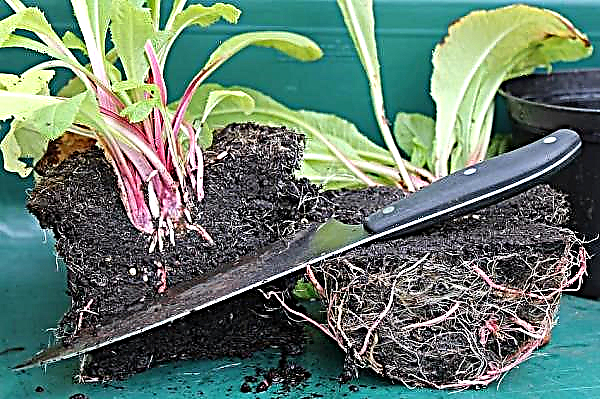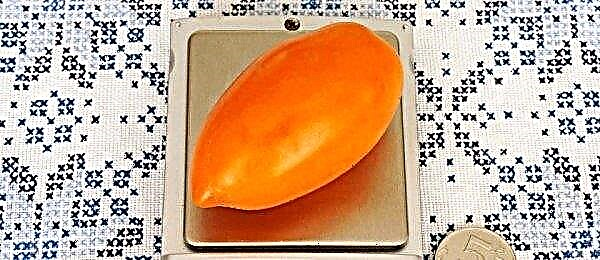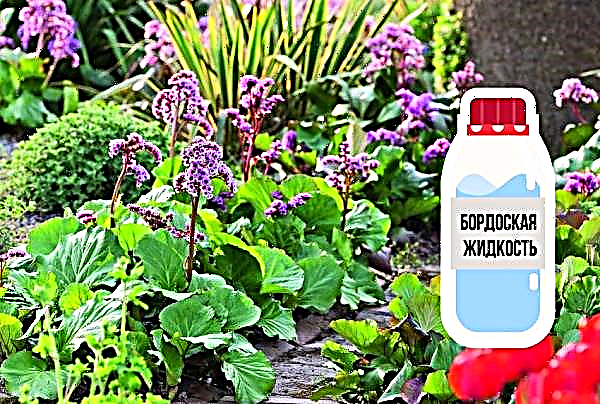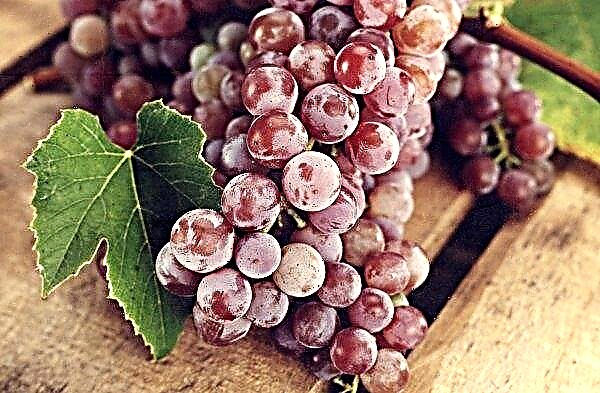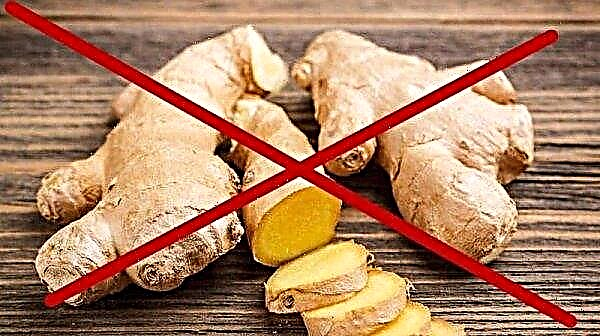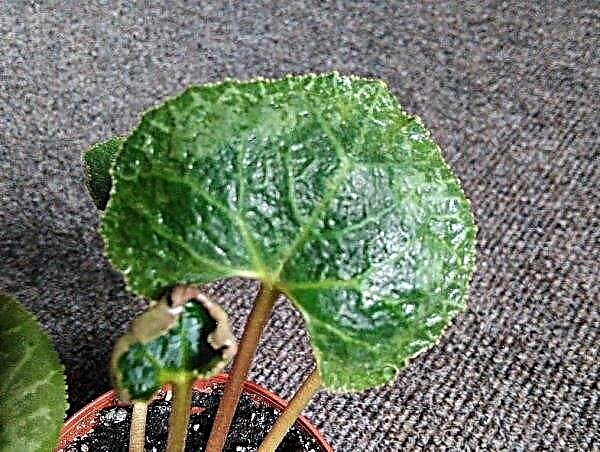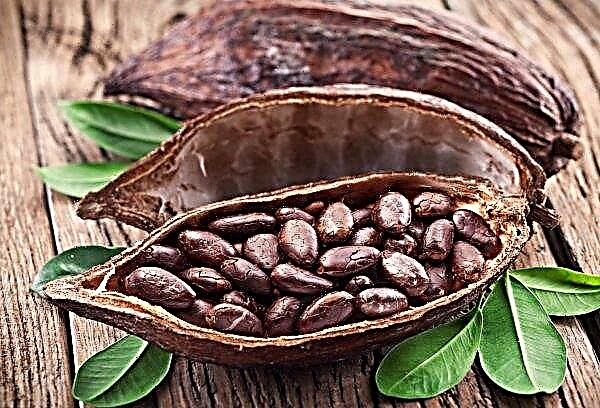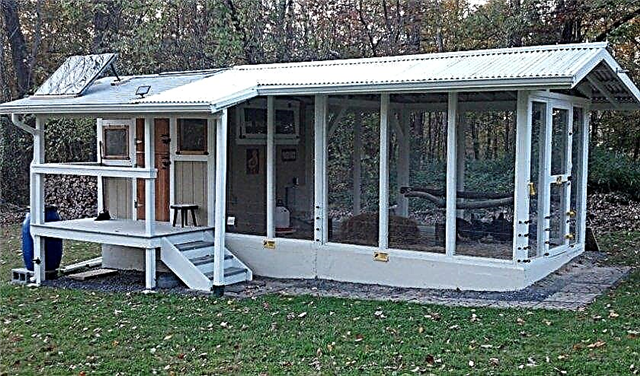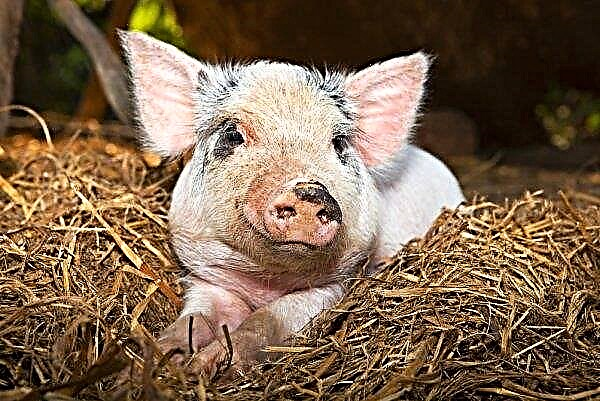In our everyday life, the words "greenhouse" and "greenhouse" have long become synonymous. But in reality, these are different concepts, although they have something in common - purpose. Let's see what is the difference between these structures.
Description and characteristic
A hotbed is a small building whose task is to protect garden crops and other plants from adverse weather conditions. This design is not heated. The greenhouse consists of a side fence and a removable roof, which freely transmits sunlight. Covering material creates an isolated space inside the structure with a certain microclimate.
Did you know? In London Hyde Park there was a Crystal Palace of glass and metal. The structure was erected in 1851 under the auspices of Prince Albert for the World Exhibition. It was destroyed by fire in 1936.
For the first time, designs similar to modern hotbeds began to be used in the era of Ancient Rome. They were stationary or mobile (fumbling in carts) and covered with caps. They were used to grow plants imported from hot countries. In the XIII century, Italians figured out how to equip a greenhouse heating system, and thus turned it into a greenhouse. In heated buildings, tropical ornamental plants began to grow - this is how greenhouses appeared.
When these structures were widely spread among the Italian nobility, they became interested in other European countries. In the XVIII century, the technology of growing plants in closed ground came to Russia. Due to the harsh climate, greenhouses were first used here, but soon the greenhouses became popular due to the simplicity of their design.

The main characteristics of the greenhouse:
- low structure - not more than 130 cm;
- heating is due to the sun and heat generated by organic matter (manure, humus);
- applicable for growing seedlings, especially early varieties;
- has a mobile design that is easy to move around the site;
- the structure does not have doors, so in order to gain access to the garden, you must either raise the entire structure or remove part of the covering material;
- for the construction you do not need to have special skills;
- a greenhouse is a seasonal thing, usually only for spring.
The difference between a greenhouse and a greenhouse
The main thing is the difference between the two structures - this is the lack of heating in the greenhouse.
In addition, there are other differences between them:
- The greenhouse is a complex, strong and reliable design, has windows and doors. The greenhouse is mobile - as a rule, it’s just a frame covered with a film or agrofibre.
- The greenhouse is used all year round, in it plants go through a full life cycle. In the greenhouse, seedlings are usually grown, which are planted at the right time in open ground.
- The greenhouse is stationary, it cannot be moved from place to place, in rare cases it can be quickly disassembled. The greenhouse can be assembled, disassembled, moved many times.
- The greenhouse effect in the greenhouse is created by the heating system, and in the greenhouse - in a natural way.

- Benefits of using a greenhouse:
- mobility;
- ease of use;
- simplicity in construction (minimum cost).
- Disadvantages:
- flimsy construction, fragile covering material is unlikely to withstand strong gusts of wind;
- applicable only to seedlings;
- only undersized crops can be grown.
- Advantages of the greenhouse:
- suitable for year-round use;
- applicable not only for private needs, but also on an industrial scale;
- it is possible to grow plants in it, not only in the soil, but also in suspended structures;
- has a reliable, durable design.

- Its disadvantages:
- difficult to manufacture;
- it requires a lot of maintenance costs;
- cannot be moved to a new place.
Having analyzed all these data, we can conclude that both the greenhouse and the greenhouse have significant positive and negative sides. Therefore, it is difficult to say unequivocally which of them is better, since each design has its own characteristics.
Types of Greenhouses
There are a lot of greenhouses. They can be classified by type of structure, by nature of purpose, by type of covering material, etc. Let us consider the most popular options for structures.
Greenhouse "Cucumber"
It is a small-sized design for growing seedlings. Its dimensions are 100 × 480 × 110 cm. The frame is a galvanized steel profile, the coating is a polyethylene film. If the design is purchased, then it also has a rail, so that it is easy to move the covering material away.  To assemble the frame, only screws and nuts will be needed, and the whole process will take 60–90 minutes. You can fix the product in place by sticking the ends of the arcs into the soil or screwing it to a wooden base. In this greenhouse, it is good to grow seedlings of cabbage, cucumbers, tomatoes, as well as flowers.
To assemble the frame, only screws and nuts will be needed, and the whole process will take 60–90 minutes. You can fix the product in place by sticking the ends of the arcs into the soil or screwing it to a wooden base. In this greenhouse, it is good to grow seedlings of cabbage, cucumbers, tomatoes, as well as flowers.
For seedlings
Such options are usually used for growing seedlings in the house. They can be built independently using ordinary plastic containers or plastic bottles, or you can purchase a ready-made greenhouse.
Among the purchase options are the most common:
- Bookcase with case. This is a simple metal structure with several tiers of shelves on which you can place drawers, containers, cups with seedlings. The greenhouse effect is created using a protective polyethylene cover. It is made with Velcro or lightning, which provides free access to plants. The rack is lightweight and mobile, so it can be installed anywhere.
- Mini greenhousebeing a reduced copy of garden structures. Usually it is made of plexiglass. The sizes of mini-greenhouses can be completely different - from compact ones that can be placed on the windowsill to overall ones that require placement on the balcony.
- With transparent cover. This option is similar to a homemade greenhouse made of a plastic container, but made of more durable materials, therefore it is more durable and looks more aesthetically pleasing. It provides cells for seedlings, which can be filled with soil mixture or put a peat tablet in them. Often the tablet comes with them in the kit.
Important! When using home greenhouses for growing seedlings of different cultures, it must be remembered that each plant has its own requirements for light and thermal conditions. Therefore, you should select cultures similar to your needs for placement in one greenhouse.
From plastic bottles
The construction of plastic bottles is not only an opportunity to save money, to design a durable and warm product, but also a “second life” for plastic bottles that will not pollute the soil, but will serve the good of plants. From this material you can create a greenhouse of any shape.
The simplest option is a wooden frame with bottles strung on rods or thread. In this design, you first need to assemble the frame and prepare a large number of bottles, then prepare the rods or a strong thread.

Further, the procedure is as follows:
- The first row of bottles with cut-off necks (you need to cut off at the bottle’s narrowing point) is put on the base of the frame and screwed to it with screws.
- Inside each bottle place a bar or fasten the thread.
- For the rest of the bottles, cut the bottoms at the expansion site and string them tightly one on one.
This type of wall and roof construction allows for a very strong and warm construction, as there is air space between the bottle walls. As a result, this design quickly heats up and holds heat for a long time, transmits light well and can serve more than one season.
Important! If a warm greenhouse is not needed, then you can build a lighter product by cutting the bottom and neck of the bottle, and cut the remaining parts lengthwise and straighten into sheets. Such sheets need to be soldered or sewn together with thread. The resulting coating is much more reliable than a plastic film.
Polycarbonate
In the modern world, polycarbonate is widely used in industry for various purposes. It is no less popular as a covering material when creating greenhouses and greenhouses. Its flexibility allows you to create designs of various shapes.
- The finished product receives the following benefits:
- ease;
- resistance to temperature fluctuations;
- good light transmission;
- strength, reliability, durability.

There are such options for polycarbonate products:
- Arched type (semicircular frame covered in polycarbonate). The main advantage of such a structure is the ability to adjust the length by adding and decreasing arches.
- "Butterfly" (arched model with flaps opening on the sides). Ideal mini-greenhouse. It is easy to move around the site, and to access the seedlings you do not need to lift the entire structure.
- Arched type drip (arcuate walls on the roof converge at an angle to the ridge). In terms of functionality, it does not particularly differ from the usual arched type, but is more resistant to snow cover pressure, as it has additional stiffening ribs, and due to the triangular roof, snow does not accumulate on it.
- Single slope (a rectangular or square structure, one wall of which is the wall of any building on the site). The roof has a slope in one direction, in the direction from the capital building. The angle of inclination is usually large so that snow does not accumulate on it.
- Gable (classic, fairly common option). The frame can be made of both wood and metal.
Greenhouse "Snowdrop"
A variant of an arch product, but instead of a plastic film, breathing agrofibre serves as a covering material. The design has a fixed height and width, 0.8 and 1.2 m, respectively, but the length can be different (4, 6, 8 m).
In the finished version, the frame is made of plastic, and the covering material is spunbond. You can make the frame yourself from another material, but you can fit it with a film. It is very easy to assemble this product, since the finished version provides convenient clips and a fixing device for fixing in the soil.

- The advantages of such a structure are:
- free access to plants;
- crop protection from frost (up to –4 ... –6 ° С);
- protection against pests and birds;
- yield increase;
- can be used in stationary greenhouses as an additional shelter;
- breathable material allows you to not ventilate the greenhouse;
- leaks moisture, which does not collect condensation.
- Disadvantages:
- suitable for undersized and self-pollinated crops;
- should be used only for plants of one species;
- without additional shelter during severe frosts, plants will not survive.
Agrofibre
Agrofibre has long been used by gardeners as mulch. This lightweight non-woven fabric does not transmit ultraviolet light, but it also allows moisture and air to pass through. Due to the fact that this material is very light, they often just cover the beds after sowing the seeds, and when the crop grows, it raises the fiber. Another name for non-woven material is spunbond, so all the greenhouses from it will be analogues of “Snowdrop”, with the same positive and negative qualities.
Greenhouse arcs
In the greenhouse, the arc is the supporting part of the frame, the "skeleton" of the structure. Without them, it will not be possible to create an arched-type greenhouse. Usually, metal, plastic or fiberglass arcs are used for this, less often - wooden ones, since although they are environmentally friendly, they are very difficult to manufacture.

Arc can be made by yourself from plastic pipes or fiberglass reinforcement. With this option, you can build products of any size - you set the size of the arcs yourself. There is also the opportunity to buy ready-made, already curved parts of the frame. Usually these are metal arcs made of durable material.
Each type of arc has its own advantages and disadvantages. So, the metal is strong, reliable, but without a protective coating is not durable, because it begins to corrode under the influence of moisture. Plastic is not affected by the environment, it is lightweight, but a capital structure cannot be built from it.
Did you know? In Japan, a greenhouse was created in which its owner was able to increase the yield of lettuce by 100 times. The secret lies in the lighting - for this, purple lamps were used to accelerate the growth of the culture by 2.5 times.
DIY homemade greenhouse recommendations
Useful tips for making a greenhouse:
- First, decide where the product will be located, since its dimensions depend on it.
- Choose the type of construction frame and consider whether it will be seasonal or durable.
- Always draw the product to make it easier to calculate the required amount of materials.
- If you plan to manufacture a dimensional structure, then assemble it in place so that you do not need to move it again.
Although the greenhouse and the greenhouse have one purpose - to protect plants from the adverse effects of the external environment, in their construction they are different structures. Which product to give preference to - each gardener must decide for himself.

